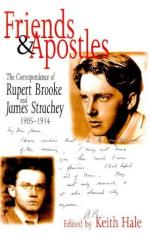|
This section contains 4,766 words (approx. 16 pages at 300 words per page) |

|
SOURCE: "Rupert Brooke," in Edwardian Occasions: Essays on English Writing in the Early Twentieth Century, Oxford University Press, 1972, pp. 144-52.
In the following essay, Hynes offers a mixed assessment of Brooke's poetry.
On the mention of Brooke's name we think first either of his five war sonnets or of the famous bare-shouldered photograph by S. Schell, used for the 1915 collection of his Poems and the original of the plaque in Rugby Chapel by Havard Thomas, whose version is in the National Portrait Gallery, where copies are sold. I shall indicate a relation between Brooke's poetry and this portrait, called by Christopher Hassall in his biography Rupert Brooke 'A visual image that met the needs of a nation at a time of crisis'.
Brooke was not obviously fitted for the role of patriot. He had, it is true, certain social advantages. He struck a figure at Rugby and Cambridge...
|
This section contains 4,766 words (approx. 16 pages at 300 words per page) |

|


